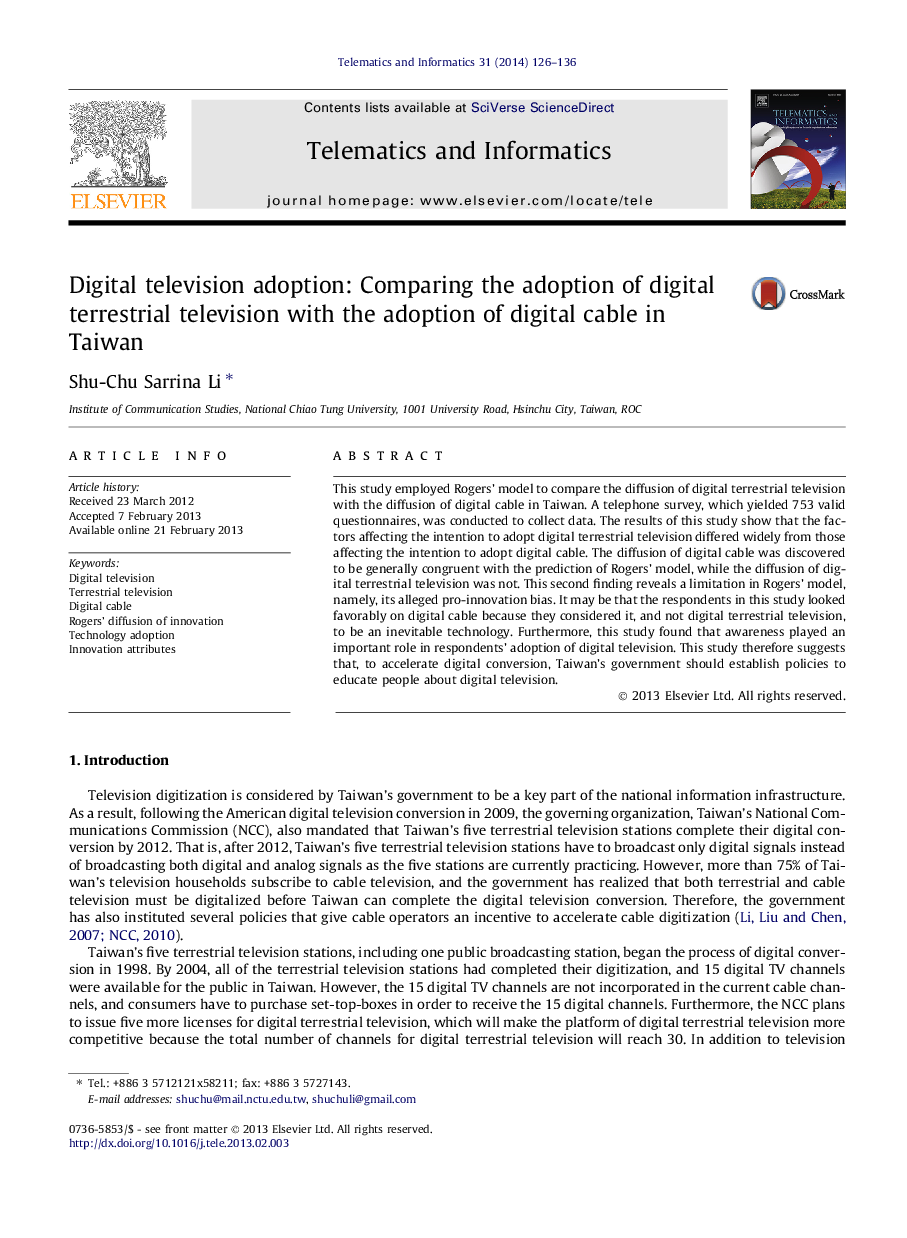| Article ID | Journal | Published Year | Pages | File Type |
|---|---|---|---|---|
| 466530 | Telematics and Informatics | 2014 | 11 Pages |
This study employed Rogers’ model to compare the diffusion of digital terrestrial television with the diffusion of digital cable in Taiwan. A telephone survey, which yielded 753 valid questionnaires, was conducted to collect data. The results of this study show that the factors affecting the intention to adopt digital terrestrial television differed widely from those affecting the intention to adopt digital cable. The diffusion of digital cable was discovered to be generally congruent with the prediction of Rogers’ model, while the diffusion of digital terrestrial television was not. This second finding reveals a limitation in Rogers’ model, namely, its alleged pro-innovation bias. It may be that the respondents in this study looked favorably on digital cable because they considered it, and not digital terrestrial television, to be an inevitable technology. Furthermore, this study found that awareness played an important role in respondents’ adoption of digital television. This study therefore suggests that, to accelerate digital conversion, Taiwan’s government should establish policies to educate people about digital television.
► The respondents regarded digital cable to be the technology of the future. ► Digital cable and digital terrestrial television are competing technologies in Taiwan. ► The diffusion process of digital cable was congruent with Rogers’ model. ► The diffusion of digital terrestrial television was not congruent with Rogers’ model. ► Awareness played an important role in the adoption of digital television.
